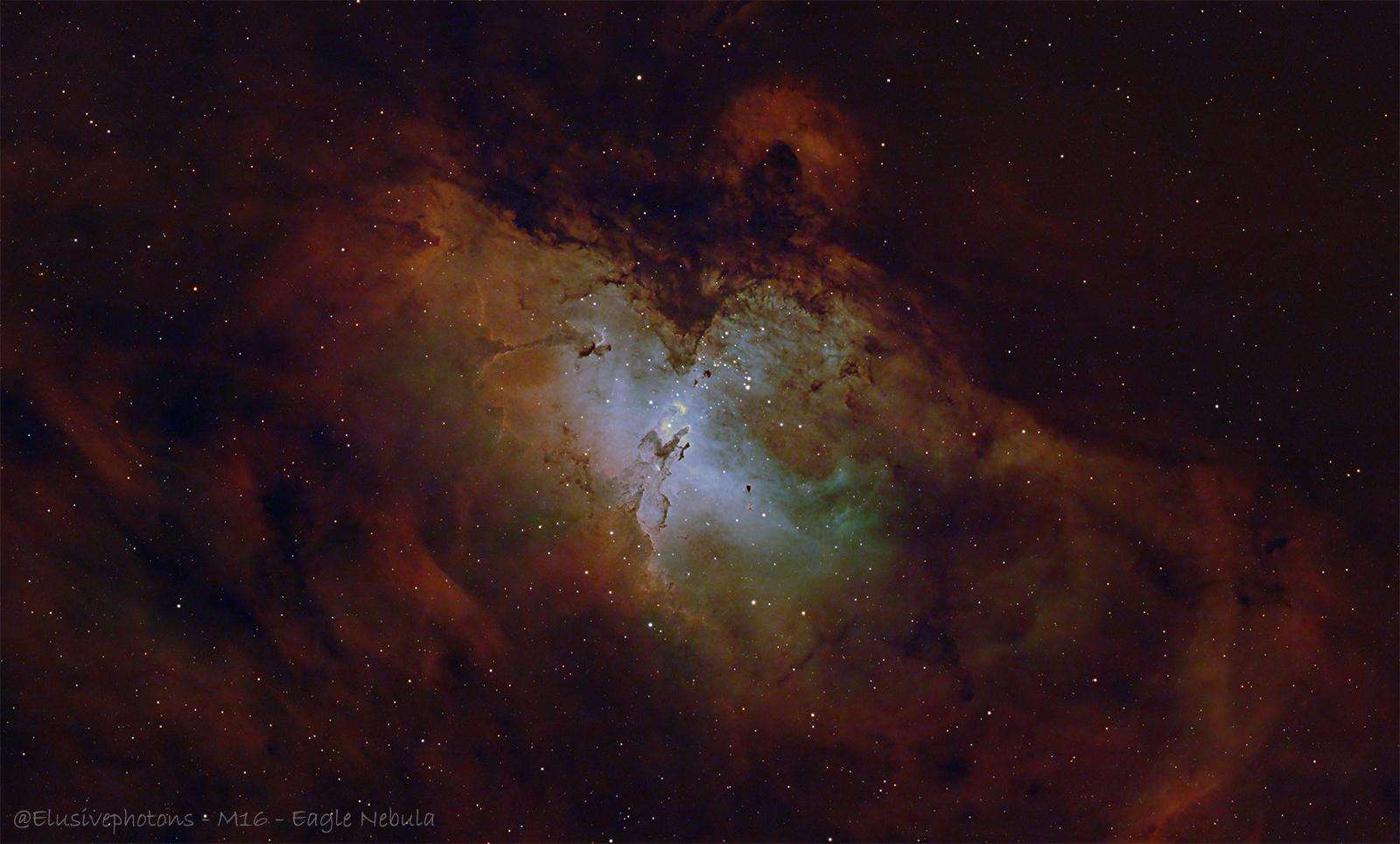Date:
July 7th - 11th - 2024
August 8th & 9th - 2024
•
Total Exposure:
193 x 3 minutes (9hrs 39mins)
About This Image
Gear:
Telescope: Stellarvue SVX130T-R
Mount: Software Bisque Paramount MX
Camera: Player One Poseidon-C Pro
Filter: Player One Anti-Halo Dual-Band Ha+OIII 2"
Accessories: 3.5" Feathertouch • Stellarvue SFFX2
Guiding: Player One FHD-OAG MAX • Player One Ceres 462M • PHD2
Software: Photoshop • PixInsight • TheSkyX • Starkeeper Voyager
Description:
The Eagle Nebula, also known as Messier 16 or M16, is a breathtaking celestial spectacle located approximately 5,700 light-years from Earth in the constellation Serpens[1][2]. This vast cosmic nursery spans an impressive area of about 70 by 55 light-years, serving as a cradle for the birth of new stars[1]. At the heart of this nebula lies a young open star cluster, estimated to be about 5.5 million years old, which contains over a thousand fledgling stars in various stages of development[1][3].
Perhaps the most iconic feature of the Eagle Nebula is the awe-inspiring structure known as the Pillars of Creation[1]. These towering columns of gas and dust, stretching 4 to 5 light-years across, were immortalized by the Hubble Space Telescope in 1995[1]. The pillars are sculpted by the intense radiation and stellar winds from nearby massive stars, creating a dramatic interplay of creation and destruction. Within these cosmic spires, dense pockets of gas called evaporating gaseous globules (EGGs) serve as incubators for future stars, shielded from the harsh environment by the surrounding material[1][3].
The Eagle Nebula is a dynamic and ever-changing environment, showcasing the raw power and beauty of stellar evolution. Its hydrogen-rich gases glow with an ethereal light, illuminated by the intense ultraviolet radiation of young, hot stars within the nebula[2][4]. This celestial canvas presents a stunning vista to observers, with its eagle-like silhouette stretching across the night sky[1]. Despite its vast distance, the Eagle Nebula is visible through small telescopes or binoculars under dark skies, offering stargazers a glimpse into the cosmic forge where new suns are born and ancient dust is transformed into worlds yet to be[2][4].
Sources:
[1] space.com/16396-eagle-nebula-m16-hubble-images-pillars-of-creation.html
[2] astrobackyard.com/m16-eagle-nebula
[3] theplanets.org/nebula-facts/eagle-nebula
[4] earthsky.org/clusters-nebulae-galaxies/the-awesome-beauty-of-m16-the-eagle-nebula
Distance: 5,700 light-years
Size: 70 light-years
| 


